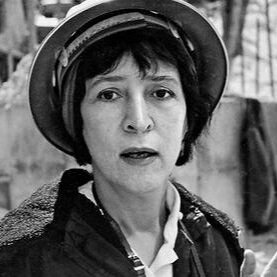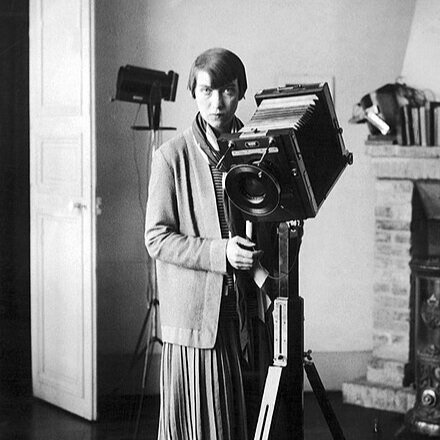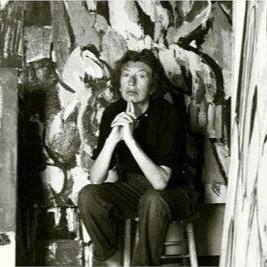Ep. 4: The Mid-1930s: Communism, Art, and Mexican Muralism
In the United States, the mid-1930s were a time when hope and renewed dreams were the business of the day—hope that the grinding poverty of the depression was finished, dreams that prosperity and opportunity lay ahead.
Berenice Abbott/Photo Montage, New York City
Social and political awareness were on the rise in art circles. Artists increasingly felt a strong affinity for the common people and argued that art should not be just for the wealthy, but available for all to enjoy. The work of many artists contained political and social commentary. Lithography, silkscreen, print making, and reproductions made a wide range of art more affordable and promoted its relevance to everyday life. There was a sense that culture mattered, that creative talent was valued and could be influential worldwide.
Many artists in the United States, Mexico, and Europe joined the Communist Party, although most were too focused on their work to be active members. As has been true throughout history, artists often have only one obsessive love, their work—all else is only temporary diversion or distraction.
Amidst enormous excitement and commentary among male artists, writers, and pundits, little was heard from women. At this time there were no Women’s Studies programs, no serious discipline called Women’s History, no academic programs available to study women’s achievements or contributions worldwide. It had not been many years since women were forbidden to sketch from live, nude models at the National Academy.
Women took their places on the periphery, usually without recognition of note, although there were a few glimmers of change—Berenice Abbott’s “Changing New York” photographic exhibition (go to this link for a very interesting display of these photos alongside a map of Manhattan showing where each subject existed), for example. Another photographer active in New York at the time was Helen Levitt. She would become well known in the coming years for her innovative and historic work in Mexico. It was during this period that Lee Krasner, while studying with Hans Hofman either at the Art Students League or in his School of Fine Arts on Madison, received this dubious comment about one of her paintings: “This is so good you would not know it was painted by a woman.”
Annette Pepper eagerly sought membership in New York’s dynamic art world and actively looked for opportunities to participate. Robert Moses, known as the "master builder" of mid-20th century New York City, was working with sculptors, architects, and artists to beautify and renew Manhattan and Long Island and she became involved at the sidelines, meeting Isamu Noguchi and other key participants. She belonged to the American League Against War and Fascism and went to meetings about the Spanish Civil War. The fervor of those meetings must have been inspiring. As today, both men and women readied for change, insisting that the individual mattered.
But art, not politics, was Annette’s true calling. While still in her teens and finishing her BA at Hunters College, she had already begun to support struggling artists, something she would continue throughout her life. She had a sharp eye for talent, for artists who would later become well known. She bought work on time, for $10 a week, from starving artists in the village such as Byron Brown. While at the National Academy, she bought a number of paintings from Sandor Klein and Igor Pantuhoff, her lovers, and from Lee Krasner and Jackson Pollock, who were actively producing at the same time.
It was events in neighboring Mexico that eventually caught Annette’s attention and lead her to a decision that would alter her life’s course irremediably. The Mexican art scene had taken on a sharp populist sentiment that was yielding vibrant, larger-than-life public art reflecting the lives and history of the Mexican people, the cultural legacy of the Mexican revolution, and the rights and aspirations of peasants and laborers worldwide. It taunted elitism, challenged embedded entitlements and old-money caste systems. Bold color and broad strokes expressed society’s displeasure and demands for change.
The most famous of the Mexican artists—José Clemente Orozco, David Siqueiros, and Diego Rivera—were commissioned to create murals in the United States and meeting them and seeing their work created a watershed moment for the artist who would become known as Annette Nancarrow, moving her one step closer to her destiny.




